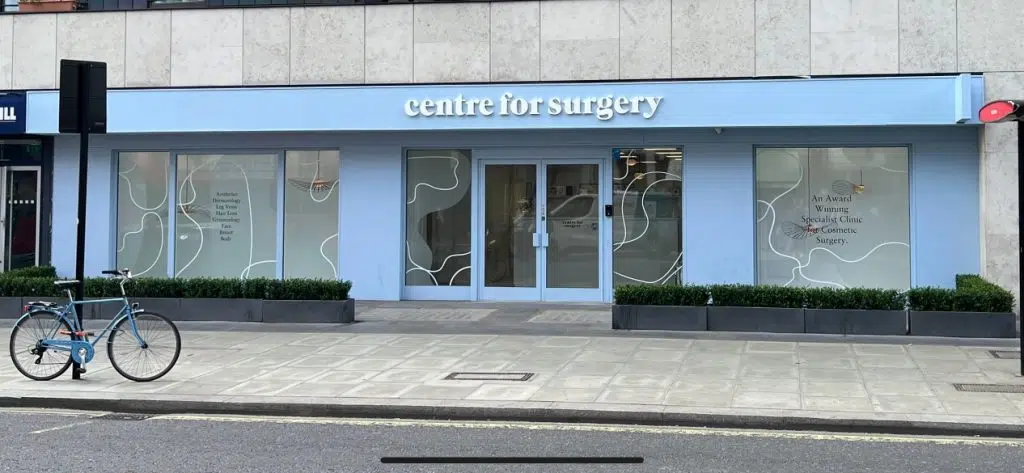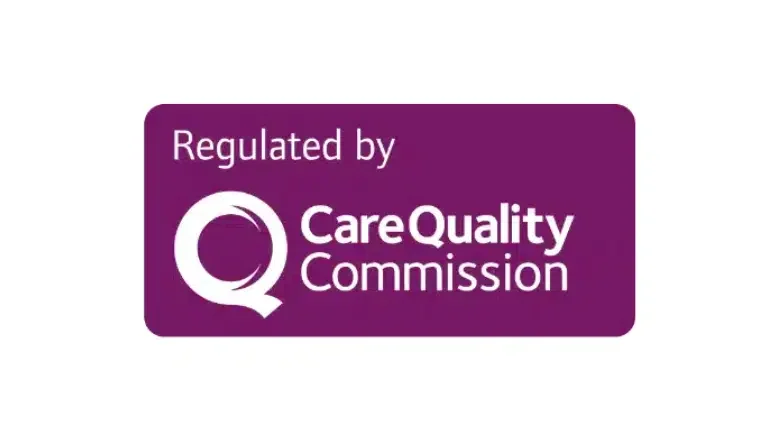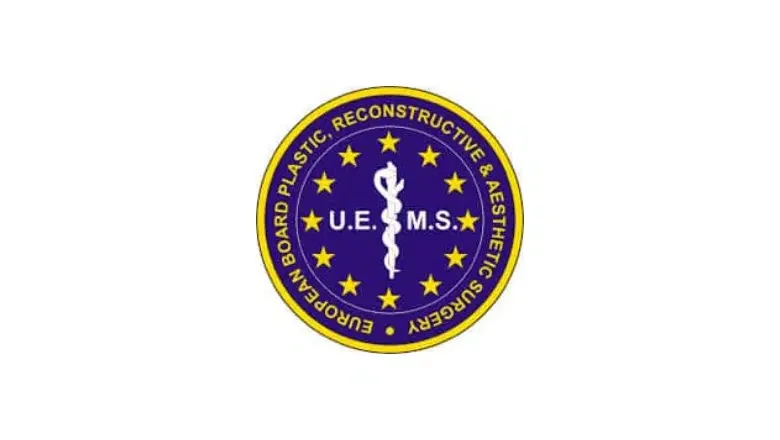What does “breast implant bottoming out” mean?
Breast implant bottoming out is a potential complication that can arise after undergoing breast augmentation surgery. This condition refers to the displacement of breast implants, causing them to shift downwards and protrude excessively from the lower breast area.
One can identify bottoming out by observing an uneven distribution of breast volume, with the lower pole appearing longer or fuller than the upper pole region. This alteration in the breast shape may also create an unbalanced or disproportionate appearance, compared to the expected teardrop or round shape of a breast implant.
Moreover, the nipple’s position may change as the implant descends lower on the breast mound, resulting in an upward-pointing direction rather than facing forward or central.
Therefore, it is essential to monitor any changes in breast shape and nipple position after breast augmentation surgery, as this can help identify bottoming out early. If you suspect bottoming out, it is best to consult with a plastic surgeon at Centre for Surgery promptly to determine the appropriate course of action to address this issue.
Breast Implant Settling vs Bottoming Out of Breast Implants
It is crucial to understand that breast implants’ shape and position can change over time, even after surgery. However, it is important to differentiate between normal settling of breast implants and bottoming out, which is a more severe issue.
RELATED: Drop and Fluff after Breast Augmentation
Breast implant settling is a common occurrence and typically happens a few months after surgery. During this time, the implants will gradually adjust and settle into their final position within the breast pocket. Initially, you may notice some swelling, making your breasts appear larger and more projected than the final result. However, this is entirely normal, and your surgeon will likely caution you to expect some settling.
In some cases, your surgeon may even place your implants slightly higher than what you think would be ideal. This strategy is to allow the implants to settle into a natural position on your chest wall over time, rather than drooping too low and causing bottoming out.
It is also important to maintain a balance between the upper pole and lower pole position of the breast implants to achieve a desirable breast shape and projection. This balance is key to achieving the best possible result from breast augmentation surgery.
However, there are limitations to achieving a successful outcome from breast implant surgery, such as skin strength and elasticity. If you have weakened internal structures, such as atrophy, you may be at higher risk of experiencing bottoming out, which is a more severe condition that requires medical attention.
Therefore, it is crucial to monitor your breast shape and position after surgery and seek medical advice if you have any concerns about settling or bottoming out. Your surgeon can provide guidance and treatment options to address any issues and ensure the best possible outcome for your breast augmentation procedure.
Why does bottoming out of breast implants occur?
Bottoming out of breast implants is a complex issue that can occur due to several reasons. The key risk factors for bottoming out include skin condition, ptosis, and pocket placement.
If your skin lacks the necessary elasticity to accommodate a larger size implant, it may lead to bottoming out. Similarly, if you have drooping skin and nipple position, a breast lift along with implants may be necessary to prevent bottoming out.
The pocket placement, which is the size, shape, and placement of the implant by an inexperienced surgeon, can also contribute to bottoming out. If the implant is placed too low or not adequately supported, it can cause the implant to bottom out.
Bottoming out is characterised by several symptoms and signs, including a stretched distance between your nipple and inframammary fold, downward bulging of the breast tissues, and upward-pointing nipples. If you notice any of these symptoms, it is essential to seek a proper review and assessment by your plastic surgeon.
Self-assessment is not recommended, as other factors may be impacting your results. Your surgeon can assess the cause of bottoming out and provide the appropriate treatment options, such as corrective breast surgery, to address the issue and prevent further complications.
Bottoming Out vs Breast Sagging – Key Differences
It is essential to differentiate between bottoming out and normal breast sagging (ptosis), which can occur with age, pregnancy, weight loss, and breastfeeding.
Breast sagging or ptosis is characterized by a drooping or sagging appearance, often due to a lack of skin elasticity, and the breasts may appear empty or deflated. The nipples typically point downward in this condition.
In contrast, bottoming out occurs when the skin cannot support the size or position of the breast implants. In this condition, there is an imbalance of upper/lower pole projection (volume), and the bottom of the breast tissue bulges downward. The nipples may appear to point upward in bottoming out.
It is important to note that bottoming out is typically due to breast tissue laxity, which is a loss of skin elasticity. This issue may arise if too large an implant size is chosen, which the skin cannot support. In some cases, a smaller implant size and/or breast lift may have yielded a more better and long-lasting result.
Can Breast Implant Bottoming Out be Corrected?
Yes, bottoming out can be corrected through revision breast surgery. The procedure typically involves exchanging the implants and using Mastopexy techniques to lift the breasts and nipples to their proper position.
Corrective surgery for bottoming out may sometimes require a two or three-step process. In some cases, the breast implants may need to be removed, and the breast pockets given time to heal. Afterward, new implants may be reinserted, but additional precautions may be needed to support the implant’s weight properly.
An implant size adjustment may help reduce the future risk of bottoming out. However, if you have loose or low skin collagen, which leads to a loss of skin elasticity, you may need to consider other options such as smaller implants or a breast lift with or without implants.
It is important to consult with a skilled and experienced plastic surgeon at Centre for Surgery to discuss the best treatment options for your specific situation. Our surgeons can evaluate the cause of bottoming out and develop a personalised treatment plan to address the issue and prevent future complications.
Top Tips to Minimise Risks of Implants Bottoming Out
Reducing the risk of bottoming out after breast implant surgery is essential to ensure a successful outcome. Bottoming out occurs when the breast implant moves below the natural inframammary fold or the crease beneath the breast, leading to an imbalance in the upper and lower pole projection. This complication can occur due to various factors such as skin laxity, implant size and placement, and surgical technique. Minimising the risk of bottoming out requires a multi-faceted approach that includes careful planning, choosing the right surgeon, and following proper postoperative care. By taking these steps, you can minimise the risks and achieve excellent results from your breast augmentation surgery.
To minimise the risk of bottoming out, here are some detailed steps that you can take:
Step 1: Choose an experienced specialist plastic surgeon
Choosing a specialist plastic surgeon with extensive experience in breast augmentation surgery is crucial. The surgeon should evaluate your specific skin condition risks and help you select the right implant size, shape, and placement to achieve your aesthetic goals while minimizing the risks of complications.
Step 2: Avoid fluctuations in body weight
Understanding your body’s natural anatomy and potential risks is essential to reduce the risk of bottoming out. If you have a history of breast skin laxity or stretch marks, your surgeon should be informed to evaluate the risk of bottoming out.
Step 3: Discuss and evaluate position options with your surgeon
Your surgeon should discuss the different implant placement options with you and evaluate your suitability for each option. Sub-muscular implant placement may reduce the risks of bottoming out for some patients, while others may benefit from sub-glandular implant placement.
RELATED: Breast implant placements – over or under the muscle?
Step 4: Choose the right type of implant
Different types of implants, such as silicone or saline implants, have different properties that can affect the risk of bottoming out. Silicone implants are generally less dense than saline implants and may potentially be less likely to lead to bottoming out. Additionally, choosing a lighter or smaller implant can help reduce the risk of bottoming out.
RELATED: Round vs teardrop implants – choosing the best breast implant shape
Step 5: Choose an appropriate implant size
Choosing an appropriate implant size that is proportionate to your body frame and breast tissue is crucial. Very large implants on a small frame can place unnecessary pressure on your supporting breast tissues, leading to bottoming out. Your surgeon should guide you in selecting the right implant size to minimize the risks of complications.
RELATED: How to choose the best breast implant size
Step 6: Consider the use of internal bra techniques
Some surgeons may use internal bra techniques such as acellular dermal matrices (ADM) or other supportive suturing methods to reduce the risk of bottoming out. The downsides are that these techniques are expensive.
Step 7: Use anchoring sutures
Anchoring sutures can be used to secure the deep connective tissues of your breast area to the connective tissues of your chest wall. This creates a temporary barrier as the implant is healing and may help reduce the likelihood of the implant migrating too far downwards.
Step 8: Evaluate capsular adherence and implant texture
Capsular adherence and implant texture can affect the risk of bottoming out. Some implants may have a higher degree of adherence to internal tissues due to shell texture, which may help hold implants in position if the skin is lax.
Step 9: Follow your postoperative instructions
Following your surgeon’s postoperative instructions is crucial to ensure proper healing and minimise the risks of complications. This may include wearing supportive garments and bras, avoiding strenuous activities, and attending follow-up appointments.
RELATED: Recovery After Breast Augmentation Surgery – Top Tips
Why choose Centre for Surgery for Revision Breast Surgery?
Centre for Surgery is a renowned plastic surgery clinic in London that specialises in a range of cosmetic and reconstructive procedures, including revision breast surgery. We have a team of experienced and highly skilled plastic surgeons who are dedicated to providing our patients with exceptional care and results.
Here are some reasons why you should choose Centre for Surgery for revision breast surgery:
- Expertise and experience – Our plastic surgeons have years of experience in performing breast revision surgery and are experts in the latest techniques and technologies. They work closely with each patient to develop a personalized treatment plan that meets their unique needs and goals.
- High patient satisfaction rates – At Centre for Surgery, patient satisfaction is our top priority. We have a proven track record of achieving high patient satisfaction rates and are committed to ensuring that our patients are completely satisfied with their results.
- State-of-the-art facilities – We operate from modern, state-of-the-art facilities that are equipped with the latest technology and equipment. Our facilities meet the highest standards of safety and hygiene, ensuring that our patients receive the best possible care.
- Comprehensive aftercare – We provide comprehensive aftercare and support to all of our patients, ensuring that they have a smooth and comfortable recovery. Our team is always available to answer any questions or concerns that our patients may have.
- Personalised treatment plans – We understand that every patient is unique and requires a personalised treatment plan that meets their specific needs and goals. Our plastic surgeons work closely with each patient to develop a treatment plan that is tailored to their individual needs.












